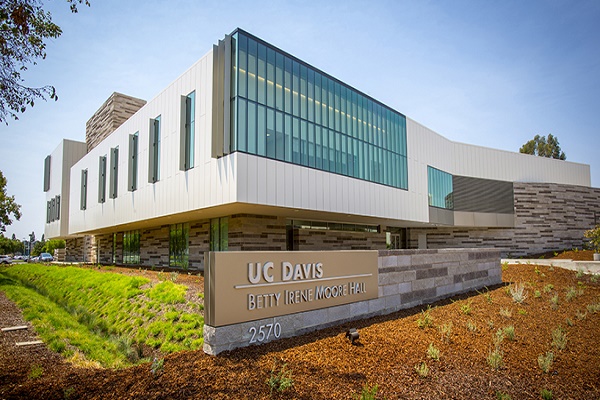University of California, Davis: Paint Shop Preserves Racetrack History
The black-and-white-striped poles around the outside of the Maddy Equine Lab are once again fit for the Sport of Kings.
The poles are 1/16-mile markers from the Tanforan Racetrack, which operated from 1899 to 1963 in San Bruno, just south of San Francisco.
The Building Maintenance Services’ Paint Shop recently refurbished these artifacts of California’s horse racing history. Chase Fowler, who received the assignment, knew the importance of the poles and was excited about the task.
He and Danny Garza, Paint Shop lead, first looked for deterioration of the poles. Garza said one was completely rotted, up to the red ball on top. Steps had to be taken to not only glue it all back together but to preserve what was left.
Fowler and Garza took care to restore the poles to their past glory, rebuilding rotted areas and using their expertise to perfectly color-match all three colors on the poles.
The distance poles, the curved outer wall and the palm trees in front are all clues to what goes on inside the building.
It is the Kenneth L. Maddy Equine Analytical Chemistry Laboratory, which serves as the primary laboratory for drug testing of horses that run at California’s permanent racetracks and seasonal fair venues. This testing is conducted to ensure that performance-altering drugs have not been administered and that permitted, therapeutic medications are being given properly.
The lab also performs analysis for private and institutional clients.
The lab in the Health Sciences District opened in July 2000. Officials moved up the dedication to November 1999 so Maddy could attend; the former state legislator, an avid horseman and supporter of veterinary education, was in ill health at the time and would die of cancer three months later.
Alex Ardans, then-director of the California Veterinary Diagnostic Laboratory System (now the California Animal Health and Food Safety Lab System), was central to the development of the Maddy lab, according to John Pascoe, interim dean of the School of Veterinary Medicine, who noted that Ardans led the design effort. The curved wall evokes a racetrack and the palms are emblematic of those found at storied racetracks in Southern California.
The distance poles add the finishing touch to the curved wall. They had been given to equine surgeon J.D. Wheat, a founding faculty member of the School of Veterinary Medicine, and he gifted them to the Maddy lab project. [The School of Veterinary Medicine also has a lab named after Wheat: the J.D. Wheat Veterinary Orthopedic Research Laboratory.]
Racetrack distance poles have black striping for 1/16-mile markers (like the Maddy lab’s), green striping for 1/8 mile (or furlong) and red striping for 1/4 mile.

